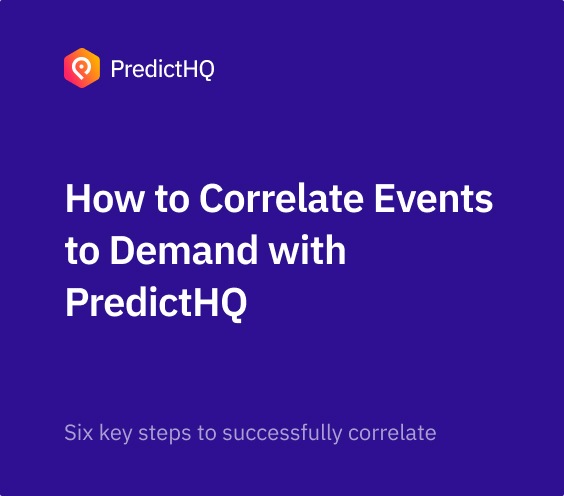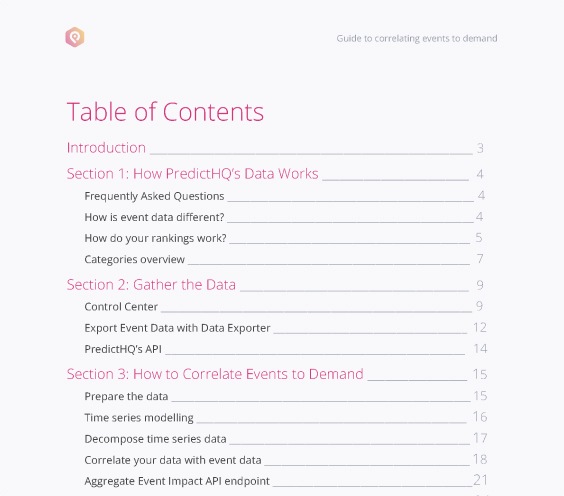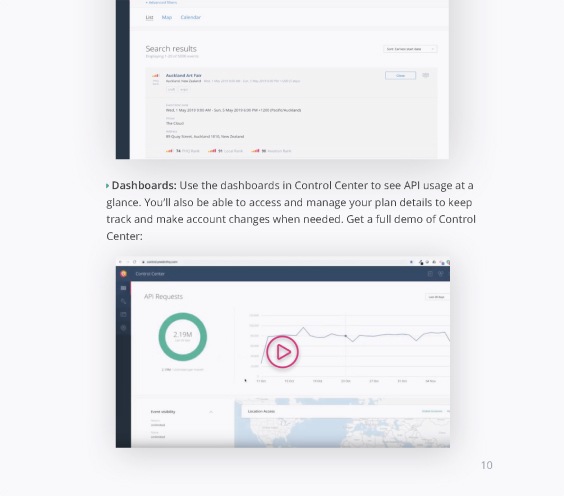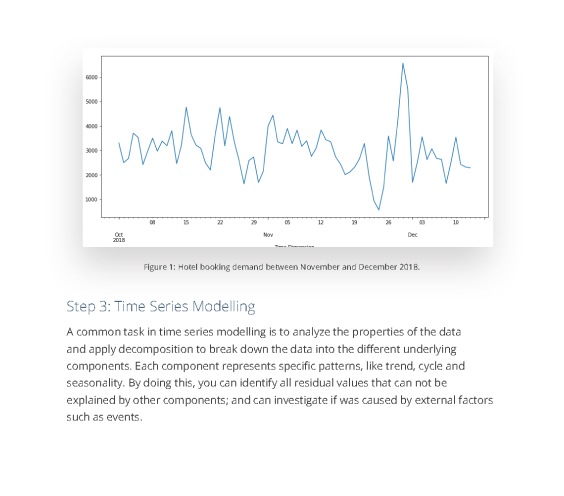Get Started
Contact our data science experts to find out the best solutions for your business. We'll get back to you within 1 business day.
phq_agg_data = PredictHQ_API(type='aggregate_event_impact')
phq_aggregate_data_df = TransformToDataFrame(phq_agg_data)
model = ForecastingModel()
model.fit(your_demand_data, phq_aggregate_data_df)
future_demand = DataFrame(period=60)
forecast = model.predict(future_demand)
Events vary in size, impact, location, frequency and duration, and raw event data is unstandardized and unverified. This makes correlation complicated and time-consuming without PredictHQ.
Beam turns over a month of work into minutes
Finding the statistical relationship between historical events and transactional demand helps businesses understand event impact. This enables your team to make reliable predictions about how future events will impact business operations and transform upcoming demand fluctuations into revenue opportunities.
There are many statistical approaches that data science teams take to establish correlation between historical events and transactional demand. Time series modelling is a popular choice used to decompose transactional demand in order to study the relationship between the impact of events and demand fluctuations.
But transactional demand patterns can be complex and relevant event data can be difficult to source and process, so advanced time series modelling can take months to complete. We created PredictHQ Beam, our correlation engine, to turn months of work into minutes. Take the labor out of establishing correlation so your teams can spend more time perfecting forecasting models .
Get practical advice by downloading and reading through PredictHQ’s technical guide.




Transforming the data is typically the most time consuming and error-prone part of the process. Extracting features from raw data to better represent the underlying problem to predictive models is critical for model accuracy. Better features, means better results.
Contact our data science experts to find out the best solutions for your business. We'll get back to you within 1 business day.